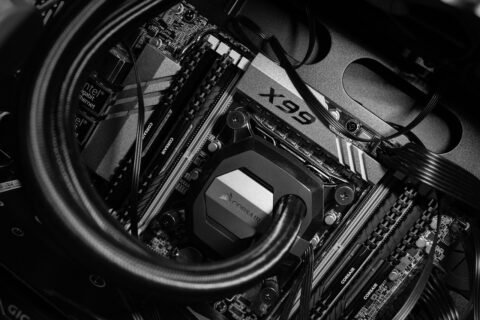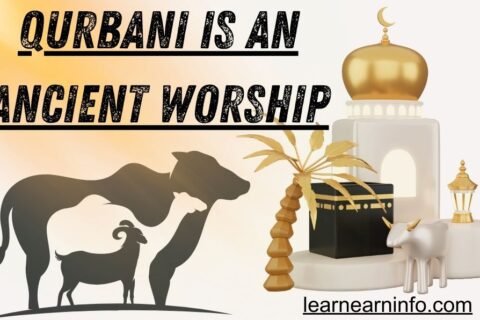“I do not fear my own demise, but rather the thought of losing the people I hold dear.”
Memorial Day Prayer Rows of fallen soldiers’ graves stretch to the horizon at Arlington National Cemetery on Memorial Day Prayer.
Table Of Content
1. Introduction: Recognizing Memorial Day’s Significance
2. The Effectiveness of Prayer in Honoring the Lost
3. Paying Tribute to the Fallen: An Examination of the Lives Lost
4. A Departure Prayer: Honoring Those Who Gave Everything
5. A Prayer for the Living: Upholding Active Duty Members and Veterans
6. Discovering the Significance of Memorial Day: Methods for Remembering and Honoring
7. Concluding Remarks: Carrying on the Tradition of Thankfulness and Remembering.
The following piece was originally published in the Kansas Reflector. By the Sunday prior to Memorial Day, my father would have already placed flowers on the family graves. He referred to them as “decorations,” sticking to the old Ozark tradition. The individuals buried in those grassy plots had been gone for many years, some even decades, but they remained alive in his memories.
As a child, I was an unwilling participant in these annual rituals. I would find a nearby tree for shade and listen with disinterested boredom as my father recited the names on the headstones. I only knew a couple of them, such as my grandmothers, while the rest were as distant to me as the sun overhead.
My father wasn’t particularly religious or fond of ceremonies, but Memorial Day was the one holiday he observed with a sense of duty akin to a civil religion. For Carl McCoy, the year didn’t begin with the lengthening days after winter, but with Memorial Day. The solemn remembrance of the deceased would typically conclude with a family meal (rarely a picnic) before the doors to summer were opened, ushering in long days, fishing with a bait caster, and homegrown tomatoes by the Fourth of July.
His preparations for Decoration Day were meticulous, perhaps due to the fact that most of the men in our extended family had served in the military, or because he himself had served as a sailor in World War II aboard the battleship Pennsylvania.. It might have also been an opportunity for him to remember all deceased relatives, whether veterans or not, without the need for words or stepping foot in a church. He was an eloquent man, a persuasive salesman, but he was reserved about sharing his emotions and uncomfortable with approved displays of piety or patriotism.
He would honor the deceased in his own way.
The first task was finding a container for the decorations. Growing up during the Great Depression, he followed the principle of using everything wisely. Instead of buying pots or vases, he saved empty one-pound coffee tins throughout the year and spray-painted them red or blue. The flowers were also not bought; they were either from his own yard or with permission, from friends’ and neighbors’ gardens.
I can’t remember if he had a favorite type of flower, but he often used peonies, hydrangeas, and asters. He would pour a little water from the tap into each tin, insert the cut flowers without arranging them, and then place them in cardboard pallets in the trunk of his bronze Thunderbird or later in a blue Buick that I didn’t like. These were for the trip to the cemeteries in Joplin, Missouri, where he spent most of his life.
He would begin in the southwest at Osborne Memorial Cemetery and finish in the northeast at Forest Park. Osborne was built in the 1930s by the Works Progress Administration and is a large area of trees and grass-covered hills separated from the outer road by a native stone wall. Both sides of my family are buried there, including relatives from both Kansas and Missouri. Most of the men’s graves had flags, indicating they were veterans. My father would move from one group of graves to the other, carrying his tin-can decorations and talking about the history of each person. By 1986, my mother would also be buried there after passing away from cancer. By that time, my parents were separated, and he didn’t have much to say about her grave, but it still received one of those painted cans.
The burial site of the writer’s paternal grandmother is located at Osborne Memorial Cemetery in Joplin, Missouri.
Throughout her life, my mother endured significant suffering, particularly in the weeks leading up to her passing. Her existential anguish was only alleviated by a morphine drip in the end. When she finally passed away, it felt like a merciful release. Although breast cancer was the ultimate cause of her suffering, there were other factors that remained a mystery, known only to her. This mystery was exacerbated by the depression that had plagued her for most of her 59 years.
As a child, death seemed abstract to me, much like quantum mechanics. The names on headstones were like codes and the dates felt impossibly distant. However, my mother’s death changed that perception. By the age of 28, death had become a tangible reality – the conclusion of a story; one lives and then one dies, either in agony or peacefully, and then the story is over. My mother’s story made me angry because it seemed like she had chosen it. This anger led me to incorporate characters resembling her in my novels, as I tried to comprehend her story.
It took me years to realize that there is more to life, especially my mother’s life, than can be categorized simply as happy or tragic. With time, both joy and sorrow come to all of us.
At Osborne, impromptu family reunions were common, with relatives visiting from cities hours or even days away, bringing decorations with them. Conversations at the graveside naturally revolved around the past, often tinged with regret and at times resentment. My father often reminisced about walking barefoot on the surrounding hillsides, armed with just a shell or two for his .22 rifle to hunt squirrels. He would also recall the time his sister hid a Hershey bar and ate it secretly at night, an act of betrayal that he carried with him throughout his life.
In Forest Park Cemetery, the graves I visited were all on my father’s side, located in the old northern section. Unlike Osborne, this area was semi-wooded and had graves dating back to the 1870s. My father always brought tools to trim the weeds and vines threatening to overgrow the graves of my grandfather and others. However, he always left the wild strawberries on the grave of a former Confederate, Sgt. William J. Leffen, a cavalryman from Tennessee who had been a family friend in the late 19th and early 20th centuries. It was always a mystery to me, as the men in my father’s family were all Union veterans. By the summer of 1997, my father would be laid to rest on one of those hills at Osborne, and on Memorial Days, a small American flag would be placed over his grave.
The concept of death no longer felt distant to me. It also didn’t seem like the conclusion of a tale, but rather a part of an ongoing story.
The aneurysm occurred suddenly, starting with a severe headache that left him unable to speak. He instructed his neighbors to call me before becoming unconscious. When I arrived at the hospital just over an hour later, the doctors informed me that there was little they could do and that death was inevitable. As I touched his toes, I couldn’t help but notice how young they looked for a 73-year-old man.
Death no longer felt distant or abstract to me. It didn’t seem like the end of a story, but rather a continuation of a larger narrative. I wasn’t sure if there was any meaning to it or if it was simply a cold, hard fact – one person is born, another dies, and if your life overlaps with the deceased, you’re bound to feel a sense of loss.
Later in life, I formed an unexpected friendship with Phil. He was a fellow author and journalist, a free thinker, and sometimes a bit of a nuisance, but always supportive. We shared many interests such as books, photography, science, philosophy, and scuba diving. It felt as though we had known each other for our entire lives. Phil even recognized my love for my wife before I did and bought champagne for our wedding.
For five years, Phil was my closest friend. You may recall me mentioning him in a previous piece for the Kansas Reflector in 2021. In the autumn of 2011, Phil had to skip a writing conference with me due to a stomachache, which he thought was just a touch of the flu. However, it turned out to be colon cancer, and he passed away three months later.
As the end approached, he never voiced any complaints and even found humor in his impending passing. Kim and I brought him food, but he could only manage a few bites. Despite his weakening state, he remained in good spirits and was skeptical about the existence of an afterlife. As his condition worsened and time grew short, I felt a strong desire to be by his side at the end, holding onto him tightly. Phil’s approaching death was not just a concept, but a harsh reality that felt cold and unyielding. It was incredibly unfair, not only to him but to all those who cared for him, especially his children. In the end, he was taken away by a sister and passed away in the mountains of Colorado. His departure brought waves of grief over me and Kim, and even now, 12 years later, the sadness still comes in waves.
One might interpret my grief as a reflection of my own mortality, but I believe there was more to it. My reaction was a response to the inevitable loss of everything we hold dear due to time and unpredictable circumstances. Death is certain, but the real challenge lies in truly living, not just surviving. I mourned deeply for Phil’s death because he had lived so fully and had touched not only my life but also the lives of many others.
I experienced a different kind of grief when my older brother passed away not long ago. He was a veteran like my father and died of a heart attack at home after living a full life. If Phil’s death felt like coming up against a stone wall, then my brother’s death felt like a heavy stone lodged beneath my ribs.
The thought of losing those I love is what scares me, not my own death.
An embellishment embellishes a tombstone in a cemetery in Emporia.
Monday marks the end of a long weekend dedicated to honoring our fallen soldiers. This tradition, which began during the Civil War, continues as a national day of remembrance for all men and women who have died while serving our country in various conflicts. We don’t need to create a heroic story or pass judgment on the wars in order to honor their sacrifice. The poem “Charge of the Light Brigade” by Tennyson comes to mind, celebrating the bravery of soldiers in the Crimean War who were tragically lost due to a military mistake.
The devastating loss of over 600,000 soldiers during the Civil War changed how death was perceived in America. This led to the common practice of embalming, starting with the first Union officer killed, Col. Elmer Ellsworth, in 1861. After his death, his body was embalmed and displayed for public viewing. Following the war, local tributes to fallen soldiers became common in both the north and south , eventually becoming regular springtime events. Memorial Day was observed on May 30 from 1868 to 1970, and later became a federal holiday on the last Monday in May.
The Civil War not only shaped modern funeral practices, but also led to a surge in spiritualism as families sought to communicate with the departed through seances. The mystery of what happens after death remains unanswered, leaving cemeteries and monuments as symbols of this uncertainty.
FAQ
What is Memorial Day’s significance?
A day of respect and grief, Memorial Day is set aside to remember and pay tribute to military people who have lost their lives while carrying out their duty.
What part does prayer have in Memorial Day celebrations?
A solemn and contemplative means of paying tribute to the departed and expressing gratitude and support for the living veterans and active service members is through prayer.
What are some spiritual practices to honor Memorial Day?
A: In addition to praying for the security and well-being of those who are presently serving in the military, one can offer prayers for the deceased in remembrance of their service and sacrifice.
How can people take part in prayers on Memorial Day?
A minute of silence to honor those who have lost their lives while serving their country, memorial services, and community events are all ways that people can take part in Memorial Day prayers
What does Memorial Day mean more broadly than just praying?
A: Inspiring thankfulness, solidarity, and a dedication to remembering the ultimate sacrifice given by military people, Memorial Day serves as a reminder of their legacy of service and sacrifice.












































